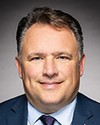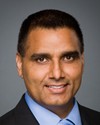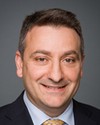Thank you, Mr. Chairman.
It's my pleasure to be here with you today.
I'm going to make a few opening remarks. I'm happy to take questions afterwards. I've circulated a copy of my remarks.
It would be useful to start off by making the obvious observation that Australia and Canada are similar countries in many respects--relatively young countries, colonial background, multi-ethnic population, federal structure--and it does, I think, make sense to compare the way we've approached major historical celebrations.
As you said, Mr. Chairman, in 2001 Australia celebrated its centenary of federation. It was an inclusive year of commemorations.
A major objective of the process was to reach out to people across the country. The context for the centenary was, of course, the bicentennial celebrations of white settlement of Australia--those celebrations took place in 1988--and the Olympic Games in Sydney, which occurred in 2000. Both of those were very Sydney-centric events. In contrast, the 2001 celebrations were designed to ripple out across every town in Australia. Also, they were equally focused, in celebrations over many days and many months, on what occurred in 1901.
Part of the focus of the year was on raising understanding of the democratic evolution and launch of the Commonwealth in 1901. The reason for this was that research showed that only about a quarter of Australians understood what federation actually was. Less than a fifth knew the name of our first prime minister. There was, in fact, a large public relations campaign around the time of the celebrations on that question--namely, what kind of country would forget the name of its first prime minister?
The celebrations were also aimed at generating debate about contemporary and future issues facing Australia. The process was launched by the appointment of a Centenary of Federation Advisory Committee, which in 1994 delivered a report recommending ways to celebrate the centenary.
A national council was subsequently established by the federal government, in partnership with the state and territory governments. The federal government provided funding of $12 million for the council secretariat; $22 million for the celebrations; $9 million for education; and $15 million for communications--media.
An Australian federation fund of one billion dollars was set up to provide a lasting legacy. That was divided into three main categories. The first was major projects, which comprised construction of a national museum and expansion of the national war memorial. A second category was cultural and heritage projects, and a third category was community-level projects.
As I said earlier, a feature of the celebrations was that they were very decentralized and dispersed across the year, with the aim of having a major impact across the country. In total, approximately 4,000 events were held during the year.
There was a three-pronged approach. The first was a program of nationally significant events, centrepiece events, as they were called, that involved every state and territory--Australian provinces--and each of those hosted at least one event.
A big feature of the process was to address the perception that Australia ended at the Hume Highway, which is the major highway connecting Sydney and Melbourne. In the northern part of Australia and in the outback, in rural and non-metropolitan Australia, many events were undertaken. I'll give you just a few highlights to illustrate what took place.
A so-called New Dawn ceremony was held in Alice Springs in central Australia on January 1.
There was the largest-ever gathering of indigenous people for the Yeperenye festival just outside Alice Springs. Australia has a long history of aboriginal settlement. In the 50,000 or 60,000 years of aboriginal settlement, there had never been a gathering of indigenous dancers and performers drawn from every corner of the country. It was very difficult for that to happen before 1788, so to make that happen at the time of our centenary was obviously a very special occasion.
In Townsville, in Queensland, which is Australia's northeastern state, a very large crowd assembled, one of the largest in the history of tropical Australia, for a north Queensland pageant. The pageant, a blend of national and regional pride, passed slowly along the foreshore.
Finally, there was a celebration of Parliament in its original home in Melbourne. Canberra is a city that was built around 1913-14. Before that, in the period between federation and the establishment of Canberra, Melbourne was the temporary home of the Australian Parliament.
Some of the most popular celebrations actually criss-crossed state boundaries, state and territory boundaries. For example, there was a Source to the Sea flotilla of boats, both old and new, which sailed along the Murray River. The Murray River links three of Australia's states.
Perth and Adelaide were linked by a train of 31 carriages commemorating the opening of the Trans-continental Railway. This railway had been one of the promises which persuaded western Australians to join the Commonwealth. It took us a hundred years to live up to that promise.
The Federation AirShow also took place in the outback region, where both Qantas and the Royal Australian Flying Doctor Service were established.
Second, there was an endorsement program that encouraged organizations and communities to develop their own activities. This ranged from festivals, parades, and sporting events to academic symposia. One was a federation father beard-growing contest. It perhaps goes more to the Australian sense of humour than to a serious historical project.
Third, there were some national projects aimed at leaving an enduring legacy of the year. For example, 1.8 million commemorative medallions were struck for schoolchildren. A website was set up to collect local histories from communities across the country, with a big focus on oral history, and a display of founding documents from federation took place at our National Archives.
The commemorations also had an overseas dimension. There was an Australia Week in London. There were arts festivals and travelling exhibitions throughout Asia--Australia's neighbourhood--and many of you may recall that there was also an Australian feature during the Winterlude festival here in Ottawa that year.
The year was primarily a celebration, of course, but it was also a time for reflection and, in some respects, even criticism. A few public lectures were held, which examined aspects of Australian history in a critical sense. With such celebrations, it is often difficult to find a sensible balance between praising and lamenting the past, but these were an attempt to look at Australia's history in a critical way and to learn from the past.
Overall, the centenary created some positive long-term legacies, from the concrete projects I've mentioned, including the railway linking Alice Springs and Darwin, to the more nebulous but nonetheless important improvement in public knowledge of Australia's history and civic pride.
I would be happy to take any questions, Mr. Chairman. Thank you.



